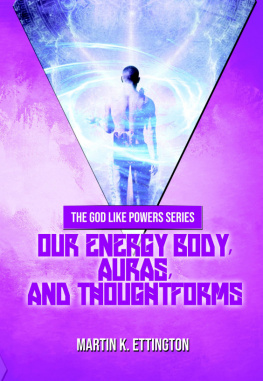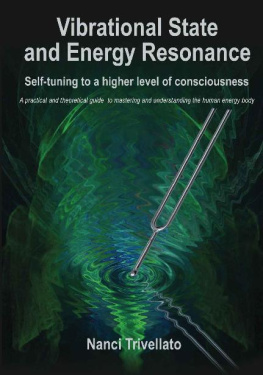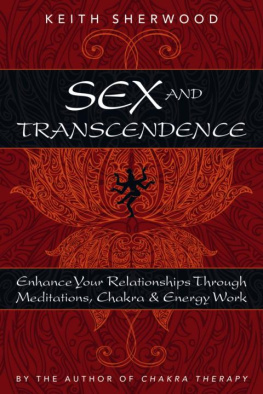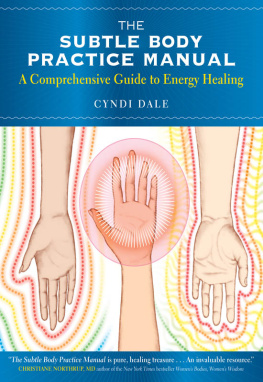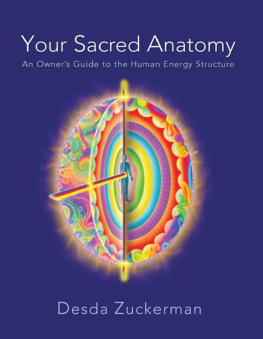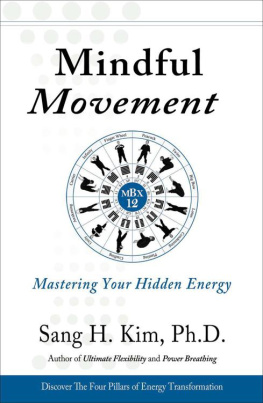
To Emma, my beloved daughter, and to her generationWith thine maps may thee securely saile.
SHAMANISM for the AGE OF SCIENCE

This is a brilliant articulation of our limitless possibilities and how to realize them. Shamanism for the Age of Science is based on the history of inquiry into energetics, up to and including the findings of modern science. This book will vastly expand your comprehension of your own energy system and what it means to you and all your relationships. The fascinating journey of discovery described here is the most important story you can know about; it will impact every moment of your life. Prepare to discover the vast if not infinite resources that are available to all of us.
JAMES L. OSCHMAN, PH.D.,AUTHOR OF ENERGY MEDICINE: THE SCIENTIFIC BASIS
Kenneth Smith illuminates the essential nature of being human, illustrates the basic mechanisms that we use to form separate realities, and offers us deeper understanding for establishing a healthier relationship in the world. This amazing book demonstrates the universality of the energy body by relating its dynamics to psychology, physics, sociology, and religion; and it helps to further establish the fields of bioenergetics, Energy Psychology, and Transpersonal Psychology. I can imagine the Toltec shaman don Juan announcing that Shamanism for the Age of Science offers us more than an ordinary path through the woods, since this is a path with true heart.
FRED GALLO, PH.D.,AUTHOR OF ENERGY PSYCHOLOGY
In the tradition of Carlos Castaneda, Kenneth Smith applies the energy body concept to a broad expanse of the academic landscape. Wisdom is a broadening and deepening of understanding, and the reader who participates in the spiritual exercise of this book will see the world differently.
JAMES F. DRANE, PH.D., RUSSELL B. ROTH PROFESSOR OF BIOETHICS, EDINBORO UNIVERSITY OF PENNSYLVANIA, AND AUTHOR OF MORE HUMANE MEDICINE
Kenneth Smith eloquently reveals what we all need to know regarding the energy bodyits nature, functions, and purpose. By embracing this perennial wisdom we are offered the rarest of opportunities: to once again experience the practical philosophy of the sage, the seer, and the shaman.
SIMON BUXTON, AUTHOR OFTHE SHAMANIC WAY OF THE BEE
Kenneth Smith has methodically and thoughtfully written what we may be looking for to help lead us toward a revolution of thought and consciousness. Whether or not you are a scientist, practitioner, or lay person this book has something for you. I wish I had it years ago.
ERIK FISHER, PH.D.,AUTHOR OF THE ART OF EMPOWERED PARENTING
If you want to change your life, simply change your mind. This simple truth is perhaps the greatest tool for personal change that remains unknown by most of the contemporary world. My hope is that Shamanism for the Age of Science might contribute to the understanding that we truly have a major role in co-creating our lives and our world, and it is a role that we can no longer neglect to take seriously.
KEVIN J. TODESCHI, AUTHOR OFEDGAR CAYCE ON VIBRATIONS
Dipping into this book, Im fascinated, sometimes uncertain, and occasionally have my buttons pushed, thinking: that really couldnt be true, could it? But if it is... What a great mind-stretcher. Or, perhaps I should better say a great energy-stretcher.
CHARLES T. TART, PH.D.,PROFESSOR EMERITUS OF PSYCHOLOGY, UNIVERSITY OF CALIFORNIA, DAVIS, AND AUTHOR OFSTATES OF CONSCIOUSNESS
Acknowledgments
For their kind influence on this endeavor, a tip of the hat to nurse and energy body researcher Caroline Coleman, bioethicist and educator Jim Drane, medical scientist and inventor John McMichael, biophysicist Jim Oschman, psychiatrist Maurie Pressman, and those shamans and scientists of near and far who revel in the dance of knowledge.
1
Shamanism for the Age of Science
Throughout the course of your everyday life, you live in the midst of infinity. In each moment, with each step, you have an infinite number of options at your beck and call. To illustrate, consider the circle, which is defined as an infinite number of points that are connecteda closed curve on a planewith each point being the same distance from a fixed point, the center of the circle. Now, stand in the middle of a room. Keeping your feet in the same place (the center of the circle), rotate 360 degrees and end where you began. In so doing, you have formed a circle, and by definition you have the ability to access an infinite number of points or directions. You can therefore behave in an infinite number of ways. As though taking compass readings, from your starting point, any movement small or large, places you in a different space, a different orientation from where you started.
If you accept that you have an infinite number of options, questions then arise regarding how you can navigate this immensity, how you can relate to it, how you can move with it, how you can expand your reference to it, and how you can grow within it. The fact is that we limit our options, confining perception and behavior within a narrow slice of the possibilities. Breaking through these barriers is often a slow process. We need to find out how to relate to the vastness of life so that we may continually awaken to new awareness, new knowledge, and new vistasfor the options are infinite.
REALITY
Reality is a human-made construct. It is a description of the world, born of imagination and defined by learning. Whether a view of reality is based on science, philosophy, religion, or anything else, it is a single canvas in a museum, or one book in a magnificent library. Each view of reality changes over time as individuals, groups, and the species evolve. What remains consistent is that the reality we experience forms from our perceptions of what we think reality entails. Since birth, we have each performed intricate maneuvers of learning, building, and consolidating a worldview. This is quite an accomplishment, even though we have created only a partial reflection of the vastness that lies before us.
The truth is that creation far exceeds our capacity to grasp it. Human-made reality is therefore a practical framework that enables us to survive and continue learning. Learning and survival go hand in hand. But to this end the current worldview is problematic. Humanity is at a crossroads, requiring a change in our view of the world in order to survive. One can argue, for example, that cyclical global warming has accelerated dramatically as a direct result of a human-made reality that renders humans separate from their planet and so the exploitation of natural resources for financial gain, rather than harmony with all aspects of the environment, now threatens social structures of all kinds, as well as the very existence of many forms of life. In a similar way, centuries ago a European flat earth view prevented exploration of oceans and continents, diminishing a new relationship with the world. Inhibited learning and lack of awareness caused the effects of both worldviews, modern and historical.
Answers to our contemporary challenges are emerging, however. People are growing more aware of cause and effect. Organizations are taking up arms on behalf of endangered species. And ethical debates abound. The intention behind this book is to contribute to the overall effort by providing information about a unique method of learning, which offers the possibility of heightened consciousness, expanded worldview, and new ways to participate with the world.
Next page

